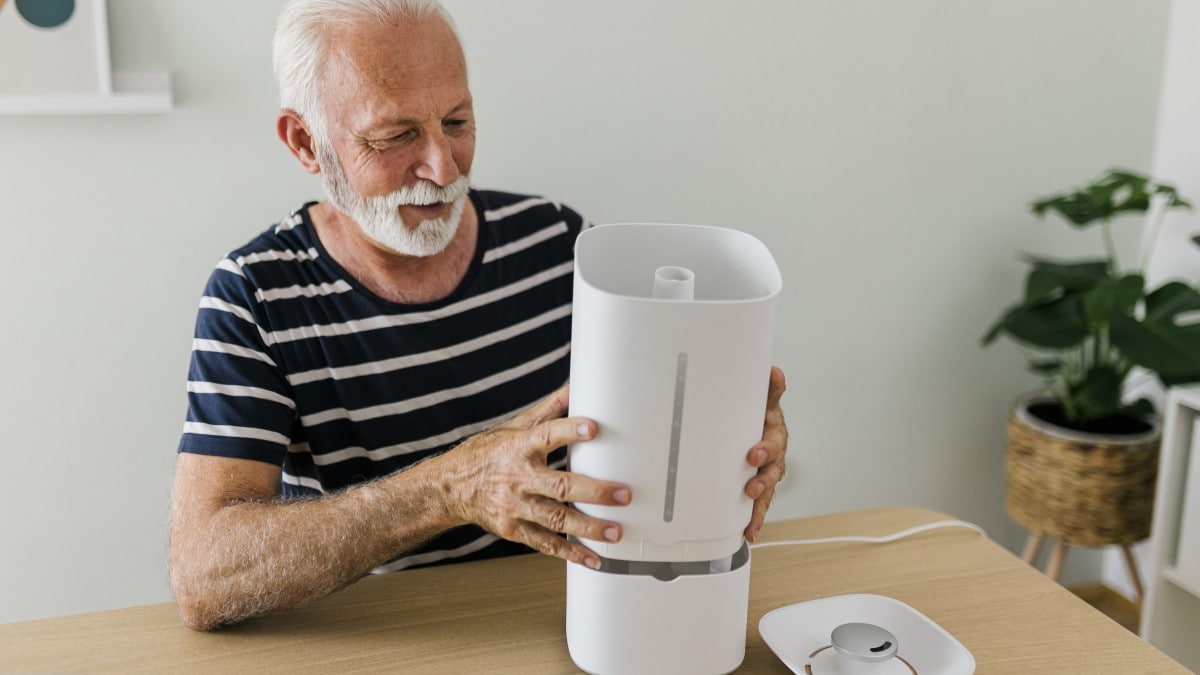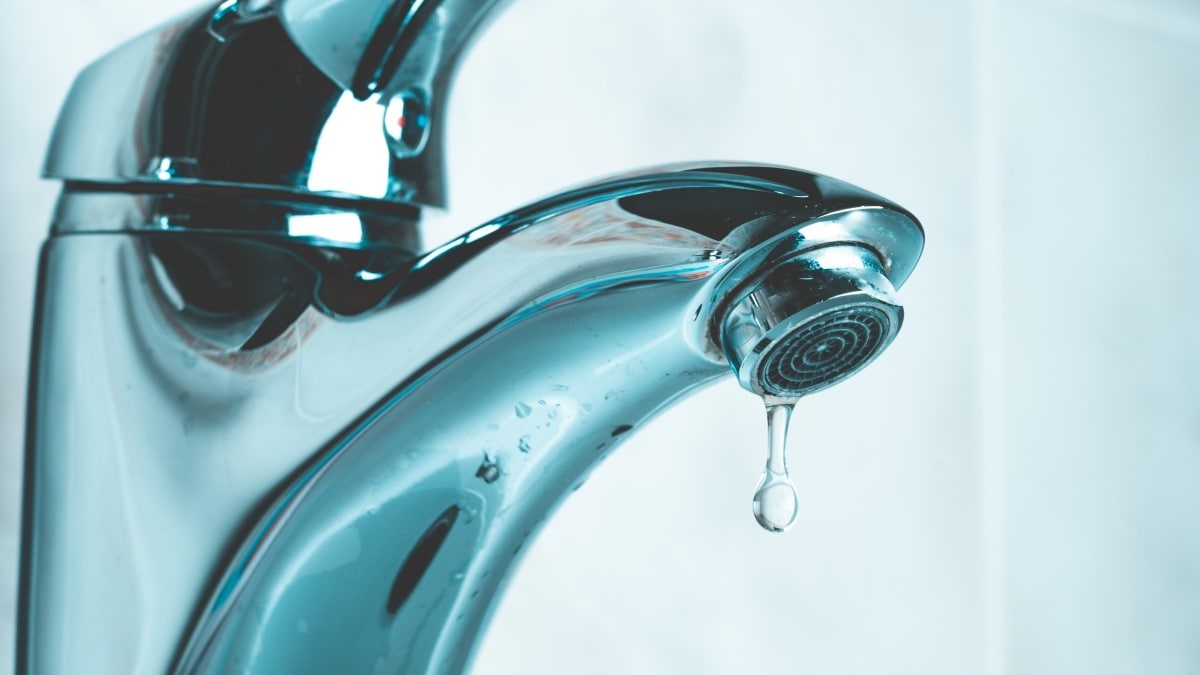Key points
- Some germs that grow in water pipes and devices that use water, such as humidifiers, can make people sick.
- Although most healthy people will not get sick from these germs, some groups are at higher risk.
- Clean water-using devices, flush faucets, and take other steps to avoid these germs.

Overview
Tap water is not germ-free
Public water utilities must provide tap water that meets quality and safety standards for drinking. However, tap water is not sterile, meaning it might have germs in it.
Even when water systems are working correctly, a small number of germs that are found naturally in the environment may be in your tap water. These germs are generally at levels that are safe to drink, but may not be safe for other uses, like nasal rinsing.
Germs can sometimes enter the water pipes in your home when the flow of water gets disrupted, like when water pipes break or your utility makes repairs to the water system.
Some germs can grow in your home's or building's water pipes when the conditions are right. For example, germs can grow if water sits still inside the pipes. This can happen when you do not turn on the taps for a long time. Germs can also grow when there are not enough treatment chemicals, such as chlorine, in the water.
Germs can grow in pipe slime
Sometimes germs—such as bacteria, fungi, or amebas—live together in a group, called a biofilm. A biofilm makes a slimy, glue-like substance. This slime allows the germs to stick to surfaces, such as the inside of a water pipe. The slime also keeps water treatment chemicals away from the germs, which helps the germs survive and multiply.
The germs that live in pipe slime often cause illnesses that affect the lungs, brain, eyes, or skin. These germs and the illnesses they cause include:
- Nontuberculous mycobacteria cause lung, blood, or skin infections.
- Legionella bacteria cause lung infections.
- Pseudomonas aeruginosa bacteria cause blood, lung, or skin infections.
- Naegleria fowleri ameba cause brain infections.
- Acanthamoeba ameba cause brain and eye infections.
Exposure
When you turn on tap water or a device that uses water, germs growing in the slime layer (biofilm) can come out. For example, they can come out of a faucet, showerhead, humidifier, or another device. This is more likely to happen if you have not used the water in a while, like a week or longer.
You can get sick from some of these germs if:
- You breathe in the water as a mist
- The water gets into an open cut or wound
- The water goes up your nose (while using a neti pot, for example)
- You store your contact lenses in the water
- The water splashes into your eyes while wearing contact lenses
Swallowing water containing germs that live in pipe slime will not make you sick.
Who is at risk
Most healthy people do not get sick from the germs that live in water pipe slime.
People who are more likely to get sick from these germs include those:
- 50 years or older
- 6 months or younger
- With a chronic lung disease, such as emphysema
- With a weakened immune system, for example from cancer, an organ transplant, or HIV
- With an illness such as diabetes, kidney failure, or liver failure
- Who smoke or used to smoke
- Who wear contact lenses
Prevention steps and strategies
Take steps at home to avoid getting sick from germs that grow in pipe slime and devices that use water.
Flush faucets and showerheads
After not using them
Flush faucets or showerheads no one has used in a while (for example, a week or more) before using them again.
To flushA:
- Turn on the cold water fully and let it run for 2 minutes.
- Turn off the cold water.
- Turn on the hot water fully and run it until it starts to feel hot.
- Turn off the water.
If your faucet or showerhead has one handle that controls both hot and cold water, follow the same steps. Put the handle all the way to the cold setting and run the water for 2 minutes. Then, move the handle all the way to hot and run the water until it starts to feel hot.
After water pressure drops
Flush each faucet and shower in your home if you notice a drop in water pressure. Flush water until it starts to get hot and runs clear (with no discoloration). Contact your water utility for more recommendations and to report the decrease in water pressure.
Clean and maintain devices that use water
Use, clean, maintain, and store devices that use water following the manufacturer's recommendations. Regularly cleaning the devices listed below removes germs, dirt, and other debris.
Portable humidifiers
Germs can live in humidifiers and spread through the mist humidifiers make. To prevent germs from growing:
- Empty all water from humidifiers every day
- Regularly clean them according to the manufacturer's instructions
- Let them air dry after cleaning
To further reduce germ growth in humidifiers, use distilled water, boiled (and then cooled) water, or water disinfected with bleach.
Neti pots or nasal rinses
Some germs that are harmless if you drink them can make you sick if they go up your nose. To avoid getting sick, follow the manufacturer's instructions when using and cleaning devices to clear sinuses. These devices include neti pots and nasal rinses.
Use distilled or sterilized water, or tap water that you have boiled to rinse your sinuses. Never use water straight from the tap to rinse your sinuses.
Showerheads and faucet aerators
Clean showerheads and faucet aerators whenever you can see buildup on them. This helps prevent germs from growing inside showerheads and faucets. The aerator is the mesh screen screwed into your faucet that helps with water flow.
You may need to remove the showerhead and hose and soak them in a solution (such as white vinegar) to remove buildup. Follow the manufacturer's instructions for cleaning.

Water filters
The germs that grow in pipe slime can also live and multiply in water filters. This can happen when you do not properly maintain and replace the filters. Additionally, some whole-home water filters remove water treatment chemicals, such as chlorine, that kill these germs.
Maintain and replace all water filters according to the manufacturer's instructions, including:
- Pitcher and countertop filters
- Refrigerator and icemaker filters
- Under sink filters
- Showerhead and faucet filters
Check and flush water heaters
Setting the temperature
Keeping your home water heater between 130°F–140°F can kill germs like Legionella in water, but also increases your risk of burns. If you set your water heater above 120°F, use valves that mix cold and hot water at the tap (called thermostatic valves) to avoid burns. This is especially important if young children, older adults, or other people at increased risk of burns live in your home.
Ask your healthcare provider about your risk of getting sick from Legionella. Discuss if setting your water heater to 130°F or above to prevent Legionella growth is right for you.
Flushing
Regularly flushing your water heater can prevent germs from growing, make it last longer, and is recommended by most manufacturers. Follow the manufacturer’s instructions when flushing your water heater or have a professional do it.
Many manufacturers recommend flushing your water heater:
- Annually
- Before you move into a home
- After plumbing work
- If tap water is discolored
Communicate with your water utility
Taking the following steps can help you stay informed and make sure your tap water is safe to use:
- Sign up to get tap water alerts from your utility or local government.
- Follow officials' recommendations during drinking water advisories.
- Contact your utility if your water is brown or discolored.
- Contact your utility if you notice a decrease in water pressure.
Keep your well safe
If you get your tap water from a private well, learn more about keeping you water safe.
Check with your building manager or owner
Building managers and owners can take steps to protect the people who live in their buildings from germs in water. If you live in an apartment building or other building with multiple units, check with your building's owner or manager about the steps they are taking.
- This guidance was adapted from work by the Water Research Foundation (Project 4572).
